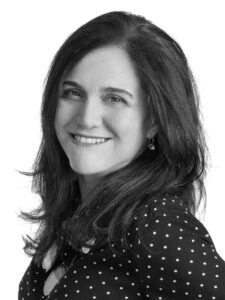
Autumn Wines earned her Bachelor’s of Psychology and International Studies at Pittsburg State University and since has amassed extensive experience across various roles: interventionalist/researcher/psychological rehabilitation provider/child life services volunteer. She was on her way to becoming a child life specialist when she realized that if she wanted to bring about real change, she needed a wider perspective. At that point, she recognized obtaining an architecture degree as the final component to complete her foundation of experience, so she enrolled at Clemson’s School of Architecture where she obtained her Master of Architecture degree. In 2019, she joined HOK, where her background includes psychology, healthcare administration, child life services and healthcare design – making her an excellent medical planner at their Washington D.C office. In her first year with the firm, she served as programming and planning leader for Grady Health System Correll Pavilion in Atlanta – helping create an outpatient center with a consistent clinic module to offer adaptable patient care services. She served as one of two lead medical planners on a 275,000-square-foot freestanding children’s comprehensive outpatient center for a confidential client. Most recently, she joined HOK’s first pediatric inpatient tower project as part of their design team; here her expertise in child life services will ensure the developmental and cognitive needs of children and adolescents are being addressed in its construction.

She is also a leader beyond the firm’s project teams, volunteering at local healthcare organizations and serving on the DC Chapter of Women in Healthcare. Additionally, she’s committed to mentoring students by volunteering at grade, middle, and high schools as well as working with undergrad students on their architecture school applications.
There’s more than meets the eye when it comes to this subject matter – let alone when discussing its treatment as an art form! – so here we go: an essential, highly practical guidebook about writing for film and TV production companies, complete with tips from those working within them! Path to Healthcare Design: After graduating with my bachelor’s in psychology and international studies from Pittsburg State University, I gained experience at several healthcare settings: Center for READing at PSU; Children’s Mercy Hospital Adele Hall in Kansas City, Mo; Spring River Mental Hospital Riverton/Columbus Kansas. Through these roles, I learned to identify opportunities for change while being ready to solve design challenges encountered daily during caregiving interventions and care provisioning services. While contemplating a career in child life, I realized that in order to effect real change I needed a comprehensive view. At that moment I recognized earning an architecture degree would complete my body of experience gained so far.
Explain your design approach: Empathize with users, identify opportunities and implement solutions.
Your desk now contains: an inpatient tower for a confidential client. I have advocated to join HOK’s first pediatric inpatient tower team and now serve on its team in its early phases of design; my experience in child life services at major pediatric medical centers will come into play here too; part of my personal mission will include making sure the design caters to developmental and cognitive needs for children and adolescents as its concept unfolds.
At my most rewarding project to date: A children’s comprehensive outpatient center for a confidential client. Working closely with users who shared my enthusiasm and energy was extremely rewarding; together we translated operations and patient safety requirements into efficient clinical environments for pediatric care. Furthermore, I collaborated with the design team to ensure all clinical comments were incorporated into interior architecture/design as well as coordinate any medical equipment needs with consulting engineers; setting a high bar for my future projects.
What success means to me: Success means being sensitive and accommodating of all our user groups, clients and even those I will never meet but whom our building will impact for over 50 years. My success means being willing to listen and ask questions to gain knowledge, build trust relationships and identify future opportunities before acting upon that knowledge by advocating and implementing solutions.
Industry Challenge on Your Radar: My industry hopes that healthcare design firms reassess the number and location of respite and lactation spaces provided to staff, patients, visitors, so as to empower users not only raise expectations of these spaces for themselves but also become aware of them for others. Furthermore, they should take inspiration from international counterparts in creating standards here for daylighting core spaces.
Empathy is the cornerstone of healthcare design today: As designers, we play an essential role in translating users’ visions to reality. By communicating and listening to our users to identify opportunities in each space. Furthermore, as designers we encourage users to think beyond what they know now to reveal what could be.
After becoming used to working from home at the start of 2020, I realized one thing I missed about being in an office was being able to run into someone and just chat for five minutes about life. So I began creating those moments virtually by sending notes or calling new colleagues just for that purpose – this has allowed me to build relationships both inside and outside our office walls.
Anne DiNardo is the Executive Editor of Healthcare Design. To reach her, email anne.dinardo@emeralddx.com.



